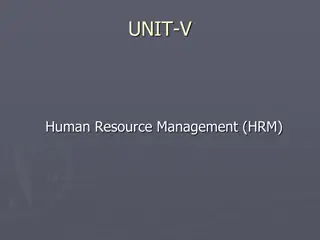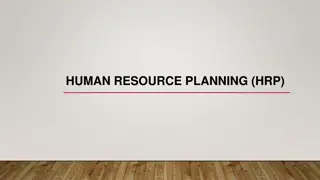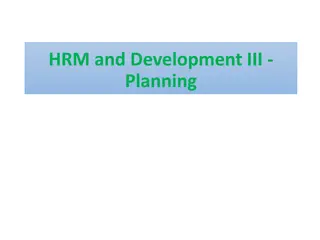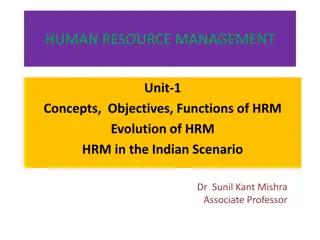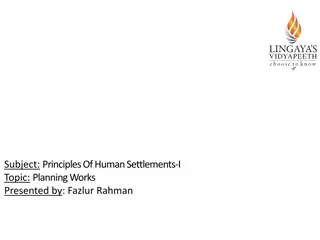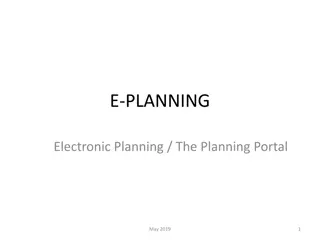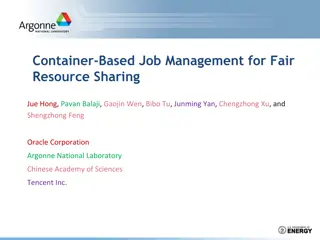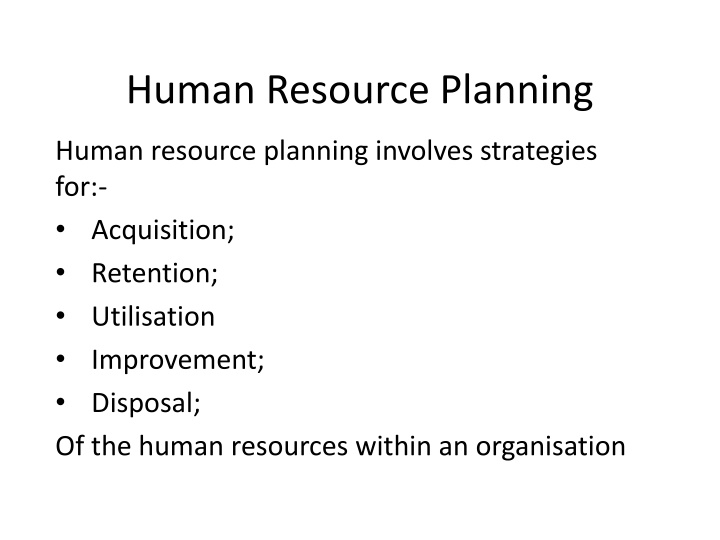
Effective Human Resource Planning Strategies for Organizational Success
Implementing human resource planning is crucial for an organization's success, involving acquisition, retention, utilization improvement, and disposal of human resources. Reasons for HR planning include staff attraction, development, and cost control. HR programs include recruitment, training, promotion, and more. Flexibility in staffing options like part-time and temporary workers, subcontracting, and non-standard contracts provides adaptability in today's competitive environment.
Uploaded on | 0 Views
Download Presentation

Please find below an Image/Link to download the presentation.
The content on the website is provided AS IS for your information and personal use only. It may not be sold, licensed, or shared on other websites without obtaining consent from the author. If you encounter any issues during the download, it is possible that the publisher has removed the file from their server.
You are allowed to download the files provided on this website for personal or commercial use, subject to the condition that they are used lawfully. All files are the property of their respective owners.
The content on the website is provided AS IS for your information and personal use only. It may not be sold, licensed, or shared on other websites without obtaining consent from the author.
E N D
Presentation Transcript
Human Resource Planning Human resource planning involves strategies for:- Acquisition; Retention; Utilisation Improvement; Disposal; Of the human resources within an organisation
Reasons for HR Planning Attract and retain staff. Utilise the staff employed. Ensure all staff receive training and development necessary. Anticipate and meet changes for the future. Able to meet HR from within the organisation. Ensure equal opportunities for promotion and development. Control HR resource costs and anticipates cost of new initiatives.
HR Programmes Recruitment Training and development Promotion Pay Productivity Transfer Retirement Redunancy
Flexibility for the firm In todays competitive world it is essential for firms to be flexible when it comes to staffing issues. Increasingly firms may consider using:- Part-time employees Temporary employees Agency staff Self-employed people
Part-time workers To perform tasks for which there is insufficient need for full-time employees. To match staffing levels to demand Because of employees preferences for part-time work. To retain valued staff. To reduce pay and non-pay costs Because such workers are less likely to be unionised. Because such workers have fewer statutory rights. Because their higher turnover results in greater flexibility.
Temporary Workers To provide short term cover. To match staff to demand. Because some employees prefer temporary work. To reduce pay and non-pay costs. Because of lower unionisation. To provide cover in a period of changing staff levels.
Subcontracting - outsourcing This is the transfer of internal activities to a third party. Examples include:- payroll, training, information systems, security. The aim is to use expertise not otherwise available within the organisation.
Non- standard contracts Flexitime allows staff to decide start and finishing times. Term-time work to facilitate employment of people with children. Job share facilitates employment of those with young children. Voluntary reduces work time an alternative to leaving the firm. Employment breaks to facilitate the return to work of mothers. Sabbaticals unpaid leave of absence. Annual hours where workers are required to work specified number of hours a year at the managements discretion. Zero hours contract a contract where a worker is not guaranteed work, but is kept on standby.



